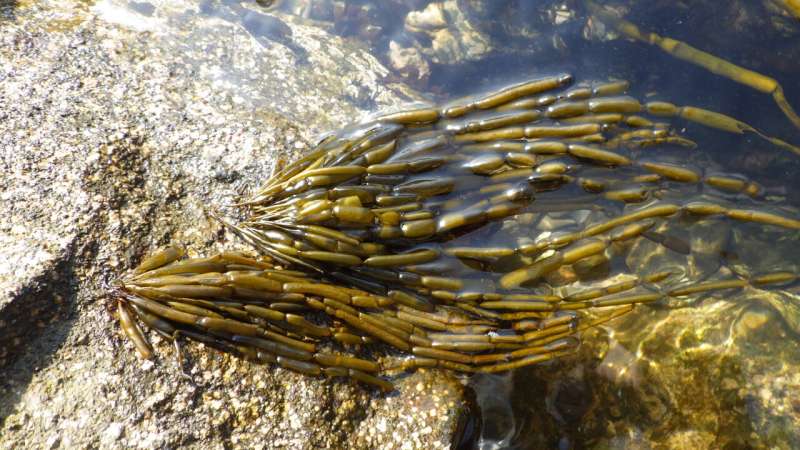This article has been reviewed according to Science X's editorial process and policies. Editors have highlighted the following attributes while ensuring the content's credibility:
fact-checked
peer-reviewed publication
trusted source
proofread
'Amazon' algae shed light on what happens to populations when females switch to asexual reproduction

Researchers at Max Planck Institute for Biology Tübingen and Kobe University discovered populations of female brown algae that reproduce from unfertilized gametes and thrive without males. In a study published in Nature Ecology & Evolution, they used "Amazon" algae to shed light on the phenotypic and genetic consequences of the shift from sexual to asexual reproduction.
The researchers found several populations of brown algae in the sea on the coast of Japan that, surprisingly, were exclusively composed of females. These populations emerged approximately 1 to 2 million years ago and were later dubbed "Amazons" due to their unique ability to reproduce alone. The team compared pairs of sexual and Amazon individuals to understand how the Amazon populations came to be and how they thrive without males.
"We were puzzled," exclaimed Dr. Masakazu Hoshino, the study's first author. "It is a unique opportunity to understand the molecular basis of the transition from sexual to asexual reproduction and to understand how females can live without males for millions of years."
The female releases gametes in seawater, which grow into adult females identical to the parent via parthenogenesis (from the Greek "Parthenos," meaning virgin and "genesis," meaning origin). Parthenogenesis is a form of asexual reproduction where an unfertilized egg develops into a new individual.
Given that female gametes may undergo parthenogenesis, whereas male gametes typically cannot, it is possible that changes in the environment, such as variations in water temperature, have led to an increase in the female-dominant population.
During the process of asexuality, Amazons underwent striking alterations, such as the loss of a female-specific pheromone, which attracts male gametes. The fact that Amazons are 'less feminized' implies that female traits are costly and, therefore, are rapidly lost when not needed: Why produce a pheromone when males are not around anymore? An asexual existence is more advantageous for the Amazons, as evidenced by the evolution of novel features like larger gametes, which provide more resources for parthenogenetic development.
Brown seaweeds, distant relatives of animals and plants, play a pivotal role in coastal areas, providing the basis of life, much like the trees in a forest. This study highlights how adaptable their way of life is, enabling them to thrive in various environments.
More information: Masakazu Hoshino et al, Parallel loss of sexual reproduction in field populations of a brown alga sheds light on the mechanisms underlying the emergence of asexuality, Nature Ecology & Evolution (2024). DOI: 10.1038/s41559-024-02490-w
Journal information: Nature Ecology & Evolution
Provided by Max Planck Society




















